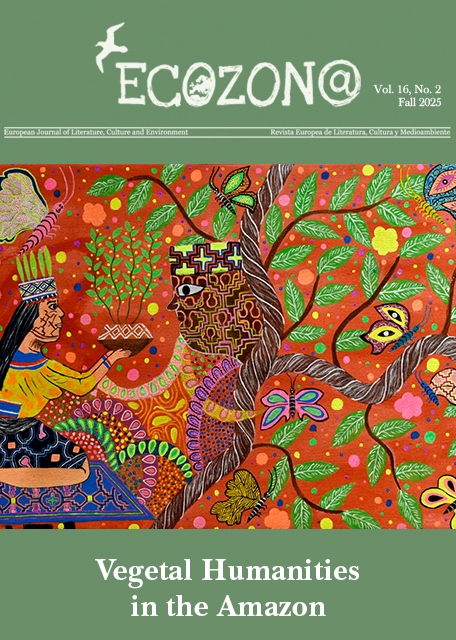Mycorrhizal Metaphors: The Buried Life of Language and Elizabeth-Jane Burnett’s "The Grassling"
Mots-clés :
fungi, language, metaphor, memoir, Elizabeth-Jane BurnettRésumé
Fungi generate and demand subterranean thinking: thinking beyond the visible, thinking that makes connections between things previously supposed to be separate or individual. This article traces an extended subterranean metaphor that likens human language to fungal networks, showing how thinking fungally can transform how we conceive of the strange, underground life of language and our entanglements in it. The article opens with a brief exploration of the relevant mycological science and the ways in which “symbiotic” metaphors shape and transform human thinking. I then offer a close reading of Elizabeth-Jane Burnett’s beautiful reflection on the relations between memory, language and landscape, The Grassling: A Geological Memoir (2019). I show how Burnett is attuned to what I call “the buried life of language”: its subterranean or invisible connectivities, its undoing of notions of individuality and centrality, and its dispersed and incalculable mode of co-creation that troubles assumptions about human agency. I argue that the etymological and lyrical mode of The Grassling invites us to recognise what lies below the surface of land, language and consciousness, and to thereby unravel some of our restrictive anthropocentrisms.
Téléchargements
Téléchargements
Publié-e
Numéro
Rubrique
Licence
Authors who publish with this journal agree to the following terms:
a) Authors retain copyright and grant the journal right of first publication with the work simultaneously licensed under a Creative Commons Attribution License that allows others to share the work with an acknowledgement of the work's authorship and initial publication in this journal (CC BY-NC for articles and CC BY-NC-ND for creative work, unless author requests otherwise.
b) Authors are able to enter into separate, additional contractual arrangements for the non-exclusive distribution of the journal's published version of the work (e.g., post it to an institutional repository or publish it in a book), with an acknowledgement of its initial publication in this journal.
c) Authors are permitted and encouraged to post their work online (e.g., in institutional repositories or on their website) prior to and during the submission process, as it can lead to productive exchanges, as well as earlier and greater citation of published work (See The Effect of Open Access).










